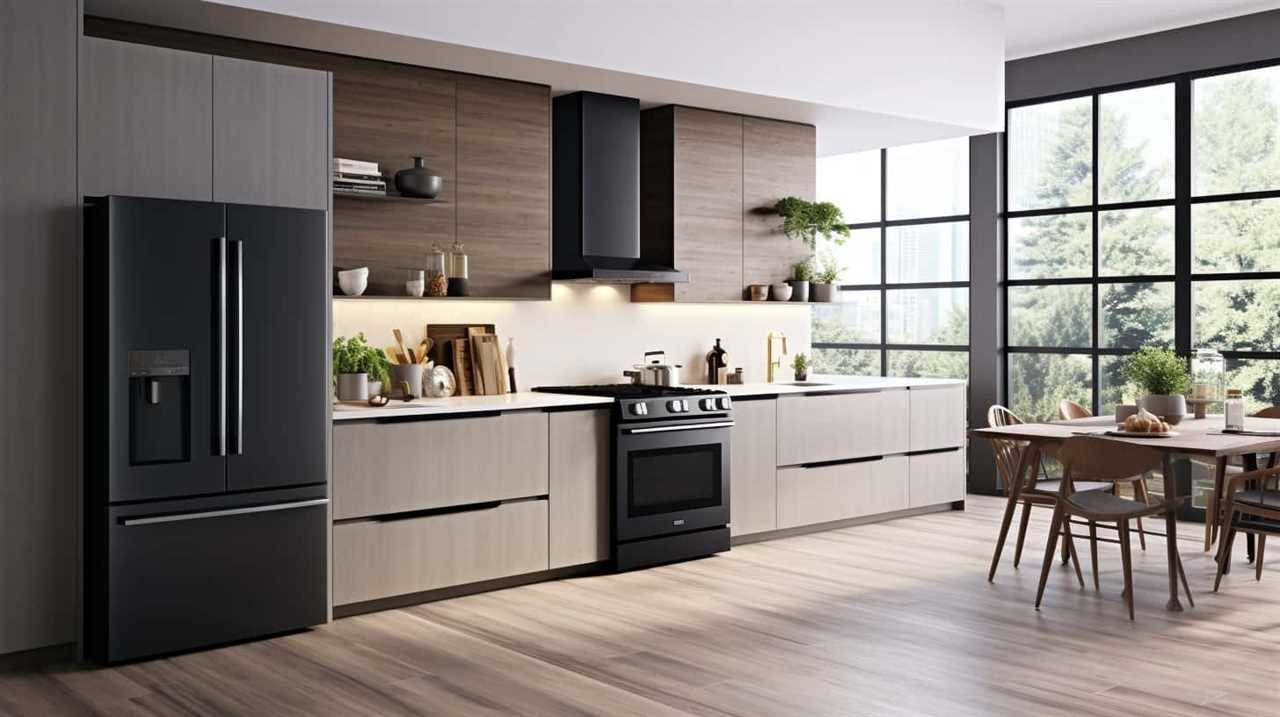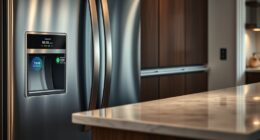Do you believe that a 3500 watt generator can provide enough power for your entire home? Let’s see if that theory holds true.
In this article, we’ll break down the exact number of appliances you can run on a generator of this size. From refrigerators to hairdryers, we’ll dive into the technical specifications and provide you with the precise information you need to master the art of generator power management.
Get ready to find out how many appliances your generator can handle!
Key Takeaways
- A 3500 watt generator can power a range of appliances including refrigerators, microwaves, televisions, laptops, and toasters.
- The wattage requirements for air conditioners, dishwashers, and electric heaters can vary, but a 3500 watt generator should be able to handle most standard models.
- When using a generator, it is important to consider the power consumption of laptops and other appliances connected to the generator, and to avoid overloading the generator by balancing power demands.
- Other appliances such as electric stoves, washing machines, coffee makers, electric fans, and irons may have higher wattage requirements and may need a generator with a higher capacity.
Refrigerator
We can power a refrigerator with a 3500 watt generator. To determine if a generator has enough capacity to run a refrigerator, we need to understand the power usage of the appliance. On average, a refrigerator consumes about 1500 watts of power. This means that a 3500 watt generator should be more than sufficient to power a refrigerator.

However, it’s important to consider other factors such as the starting surge of the refrigerator’s compressor. When the compressor kicks in, it requires additional power. A generator with a higher surge capacity is recommended to handle this initial power demand.
With a 3500 watt generator, you can confidently run a refrigerator without any issues.
Now, let’s move on to the next section about powering an air conditioner.
Air Conditioner
Occasionally, we can power an air conditioner with a 3500 watt generator. However, it’s crucial to understand the wattage requirements for an air conditioner to ensure compatibility with the generator.

The wattage requirements for air conditioners can vary widely, depending on the size and efficiency of the unit. Typically, a small window unit air conditioner requires around 500-800 watts, while larger central air conditioning units can require anywhere from 1500 to 3500 watts or more.
When using an air conditioner with a 3500 watt generator, it’s essential to consider other appliances running simultaneously, as the generator’s total wattage output shouldn’t be exceeded. Additionally, it’s advisable to use energy-efficient air conditioners and adjust the thermostat settings to reduce power consumption and optimize the generator’s performance.
Microwave
When considering the use of a 3500 watt generator with a microwave, it’s important to understand the wattage requirements of the specific microwave in question.
Microwaves typically range from 600 to 1200 watts, with some higher wattage models available.

While a 3500 watt generator has the capacity to power a microwave, it’s crucial to consider the limitations of the generator’s total wattage output when running other appliances simultaneously.
Wattage Requirements for Microwaves
Our microwave requires a wattage of 1200 watts to function properly. When choosing the right generator for your microwave, it’s crucial to consider the power requirements to ensure optimal performance. Here are four key points to keep in mind:
- Wattage: The wattage requirement of your microwave is the most important factor to consider. Make sure the generator you choose can supply a sufficient amount of power to meet this requirement.
- Surge Power: Microwaves often require a higher wattage during startup than during normal operation. Check the surge power rating of the generator to ensure it can handle the initial power spike without any issues.
- Generator Type: Different types of generators, such as inverter generators or conventional generators, have varying power output capabilities. Consider the type of generator that best suits your needs and the specific power requirements of your microwave.
- Other Appliances: Take into account any other appliances or devices that you may want to run simultaneously with your microwave. Calculate the total wattage needed to power all the appliances to ensure the generator can handle the load.
Limitations of 3500 Watt Generator
To continue the discussion of wattage requirements for microwaves, let’s now explore the limitations of a 3500 watt generator when it comes to powering a microwave.
A 3500 watt generator can handle most standard microwaves, which typically require around 1200-1500 watts to operate. However, it’s important to note that running a microwave at its maximum wattage for an extended period can put a strain on the generator and may lead to overheating or even a shutdown.

To maximize the efficiency of the generator, it’s recommended to use a microwave with a lower wattage setting or to limit the use of other high-powered appliances while the microwave is running.
Additionally, regular maintenance and proper fuel management are essential to ensure the optimal performance of the generator.
Television
With a 3500 watt generator, we can power a television for several hours during a blackout. However, it’s important to consider the power consumption of televisions and the limitations of using a generator for this purpose. Here are some key points to keep in mind:
- Television power consumption varies depending on the size and type of TV. Larger screens and high-definition displays tend to consume more power.
- It’s recommended to check the wattage rating of your television to ensure it’s within the capacity of the generator.
- Keep in mind that other appliances connected to the generator will also consume power, so you may need to adjust accordingly.
- Using a generator for televisions may not be sustainable for extended periods due to limited fuel supply and noise concerns.
Transitioning into the next section about ‘laptop’, let’s explore how a 3500 watt generator can support the power needs of a laptop during a blackout.

Laptop
Laptops are widely used for their portability and convenience. However, when running laptops on a generator, it is important to consider their power consumption. The power requirements of laptops can vary depending on the model and usage, ranging from 30 to 150 watts.
While a 3500 watt generator can easily power multiple laptops, it is crucial to factor in the power needs of other appliances. This is to avoid overloading the generator’s capacity.
Power Consumption of Laptops
Laptops consume varying amounts of power when operating. Understanding laptop power consumption and the energy efficiency of laptops is crucial for those who seek mastery in this field. Here are four key points to consider:
- Processor: The processor is a major power consumer in laptops. High-performance processors tend to draw more power than low-power ones, leading to increased energy consumption.
- Screen Brightness: Screen brightness directly affects power consumption. Higher brightness levels require more power, while lowering the brightness can significantly improve energy efficiency.
- Battery Life: Laptop power consumption affects battery life. Energy-efficient laptops can extend battery life, allowing users to work for longer periods without the need for charging.
- Power-saving Modes: Laptops often include power-saving modes that optimize performance and reduce power consumption. These modes limit the processor’s speed, screen brightness, and other components to save energy.
Limitations of Generator
Considering the power consumption of laptops, it is important to understand the limitations of a 3500 watt generator when it comes to running these devices. Laptops generally have a power consumption ranging from 20 to 100 watts, depending on their specifications and usage. To determine the number of laptops that a 3500 watt generator can run simultaneously, we need to divide the generator’s wattage by the power consumption of each laptop.
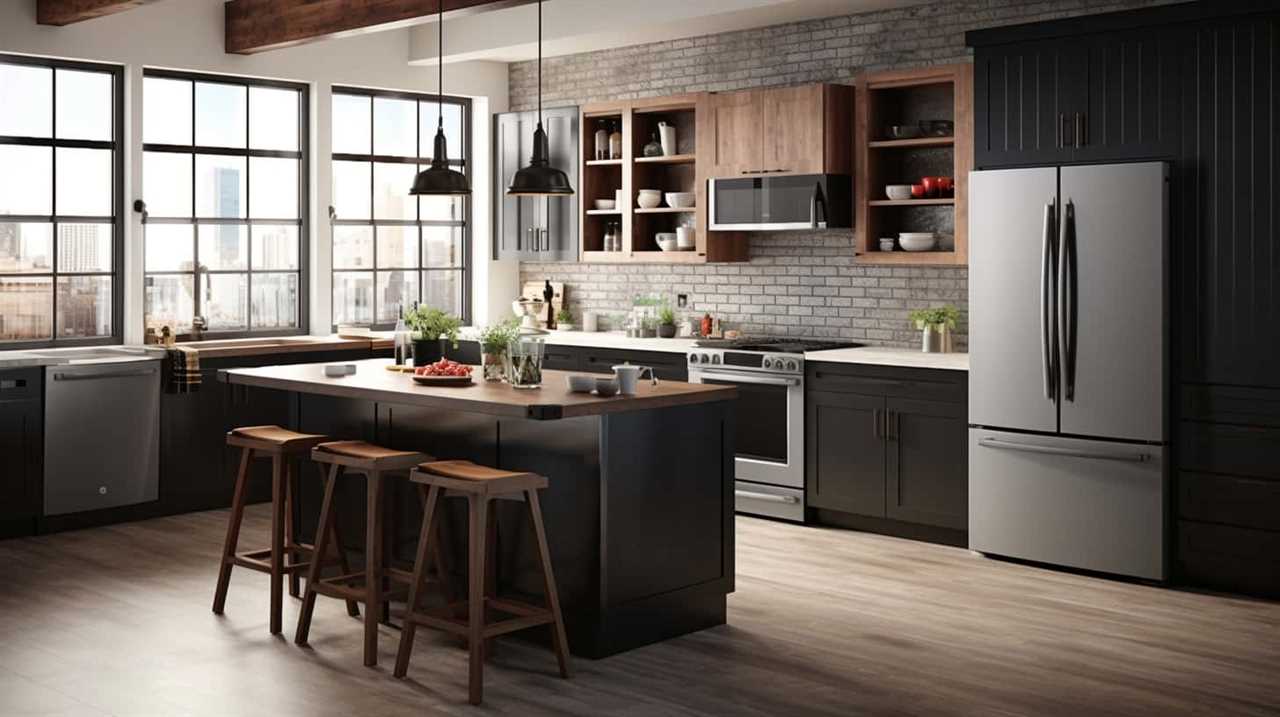
| Laptop Power Consumption (Watts) | Number of Laptops |
|---|---|
| 20 | 175 |
| 50 | 70 |
| 75 | 46 |
| 100 | 35 |
As seen in the table, a 3500 watt generator can power up to 175 laptops with a power consumption of 20 watts each. However, it is important to note that running this many laptops simultaneously may strain the generator and reduce its overall efficiency. Proper generator usage involves balancing the power demands of the appliances connected to it to avoid overloading the generator and potential damage.
Coffee Maker
Using a 3500 watt generator, we can power a coffee maker. When it comes to coffee maker maintenance, it’s essential to regularly clean the machine and descale it to ensure optimal performance and longevity.
Some of the best coffee maker brands known for their quality and durability include Breville, Cuisinart, Keurig, and Ninja. These brands offer a wide range of models with various features, allowing coffee enthusiasts to choose the one that suits their preferences. Whether you prefer drip coffee, single-serve pods, or espresso, these brands have reliable options to satisfy your caffeine cravings.
Transitioning into the next section, let’s now explore how many electric stoves a 3500 watt generator can power.

Electric Stove
When considering the wattage requirements for an electric stove, it’s important to note that these appliances typically require a significant amount of power to operate.
A 3500 watt generator may not be sufficient to run an electric stove, as most stoves require at least 5000 watts or more.
It’s crucial to understand the limitations of the generator and to ensure proper usage to avoid overload and potential damage.
Wattage Requirements for Stove
To operate an electric stove, we need to determine its wattage requirements. Understanding the wattage requirements of a stove is crucial for its proper usage. Here are some key points to consider:

- Wattage requirements: Electric stoves typically require a wattage range between 1200 to 3500 watts, depending on the model and size.
- Burner wattage: Each burner on an electric stove can have a wattage ranging from 1000 to 2500 watts, depending on its size and power.
- Oven wattage: The oven portion of an electric stove usually requires a higher wattage, ranging from 2000 to 3500 watts, depending on its size and cooking capabilities.
- Additional features: Some electric stoves may have additional features like convection ovens or warming drawers, which can increase the overall wattage requirements.
Understanding the wattage requirements of your electric stove ensures that you can use it safely and efficiently while avoiding overloading your electrical system.
Limitations of Generator
Now let’s talk about the limitations of our generator when it comes to running an electric stove.
It’s important to understand that while a 3500 watt generator can power a variety of appliances, an electric stove is a high-power appliance that requires a significant amount of energy.
The wattage requirements for an electric stove can range from 3000 to 5000 watts, which means that a 3500 watt generator may not be able to handle the load.
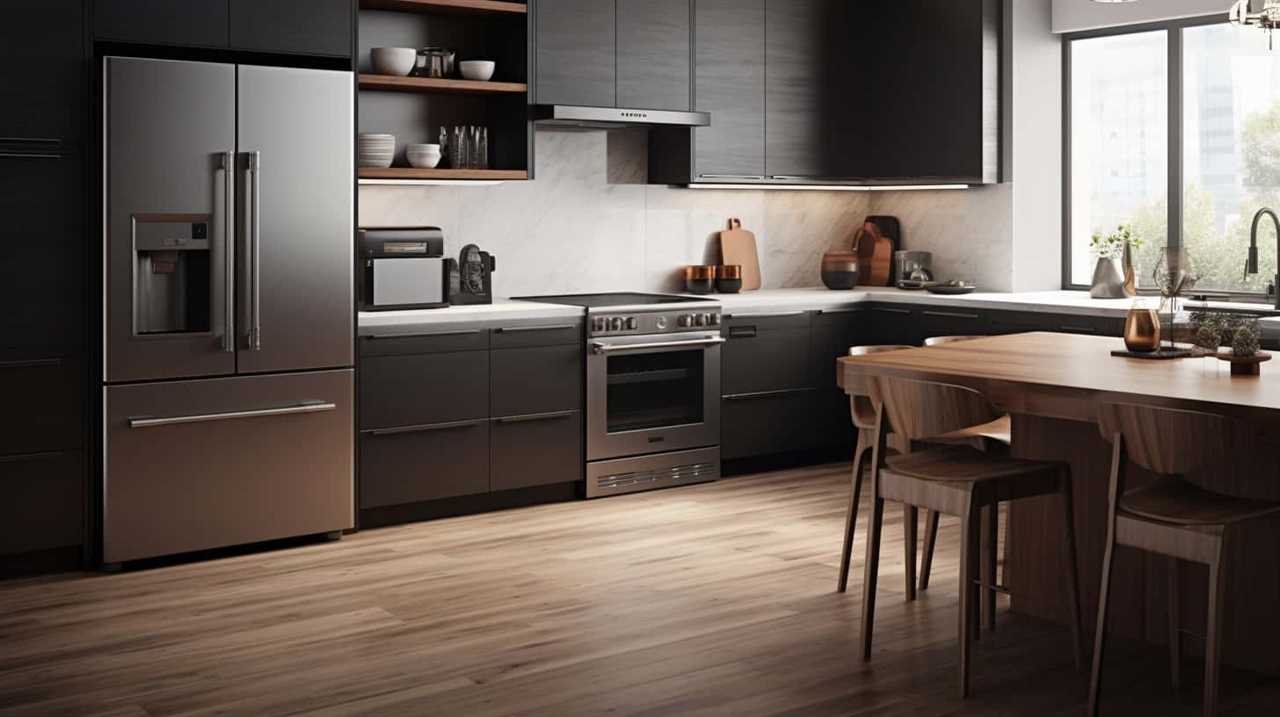
Attempting to run an electric stove on a generator that isn’t capable of providing enough power can result in damage to both the generator and the stove.
Therefore, it’s crucial to be aware of the limitations of your generator and to ensure proper generator usage by matching the wattage requirements of your appliances with the generator’s capacity.
In the next section, we’ll delve into the topic of proper generator usage and provide useful guidelines for maximizing its efficiency.
Proper Generator Usage
To ensure optimal performance and avoid potential damage, it’s imperative that we properly utilize our 3500 watt generator when running an electric stove. Here are some key generator maintenance and safety precautions to keep in mind:
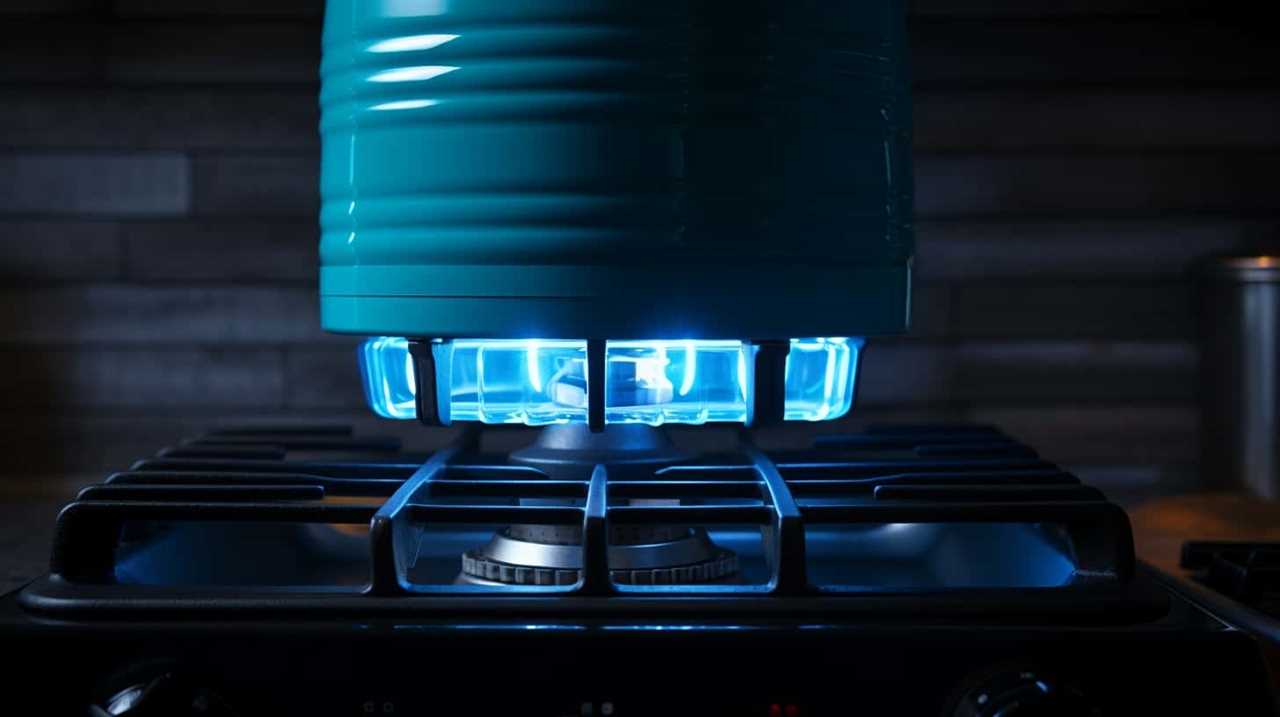
- Regular maintenance: Perform routine maintenance on your generator to ensure it’s in good working condition. This includes checking oil levels, cleaning or replacing air filters, and inspecting spark plugs.
- Load management: Understand the power requirements of your electric stove and ensure that the total load on the generator doesn’t exceed its capacity. Overloading the generator can lead to inefficiency or even damage.
- Proper grounding: Always connect your generator to a grounded outlet or use a grounding rod. This helps prevent electrical shocks and ensures safe operation.
- Ventilation: When using a generator indoors, ensure proper ventilation to prevent the buildup of harmful gases such as carbon monoxide. Use the generator in a well-ventilated area or consider using a dedicated exhaust system.
Washing Machine
We can run a washing machine using a 3500 watt generator. The optimal generator size for running a washing machine depends on the specific model and its power requirements. Washing machines typically consume around 500 to 1000 watts of power during operation. Therefore, a 3500 watt generator should be sufficient to power most standard washing machines.
It’s important to note that other appliances or devices being used simultaneously may affect the generator’s ability to handle the power load. Additionally, high-efficiency washing machines may require less power, while older or larger models may require more.
It’s recommended to consult the washing machine’s manual or contact the manufacturer for specific power requirements to ensure the generator can handle the load.
Dishwasher
After discussing the washing machine’s power requirements, it’s important to consider the power needed to run a dishwasher on a 3500 watt generator. Dishwashers typically have a power consumption range of 1200 to 2400 watts. Therefore, a 3500 watt generator should be able to handle most standard dishwashers. However, it’s crucial to ensure that the dishwasher is the only appliance drawing power from the generator to prevent overloading.

When it comes to dishwasher maintenance, regular cleaning and checking for any leaks or blockages is essential. Additionally, using energy-efficient dishwashers can help reduce power consumption. These dishwashers are designed to use less water and electricity while still providing effective cleaning. They often have features like soil sensors and energy-saving modes, which optimize water and energy usage.
Lastly, it’s advisable to follow the manufacturer’s instructions for optimal performance and longevity of the dishwasher.
Electric Heater
Moving on to the topic of electric heaters, let’s consider their power requirements and how they can be powered by a 3500 watt generator.
Electric heaters are commonly used for heating indoor spaces and require a significant amount of power to operate. When choosing an electric heater to use with a 3500 watt generator, it’s important to consider its wattage rating. Most electric heaters have a wattage ranging from 1000 to 1500 watts. This means that a 3500 watt generator can easily power one or two electric heaters simultaneously, depending on their wattage. However, it’s crucial to ensure that the total wattage of the heaters doesn’t exceed the generator’s capacity.
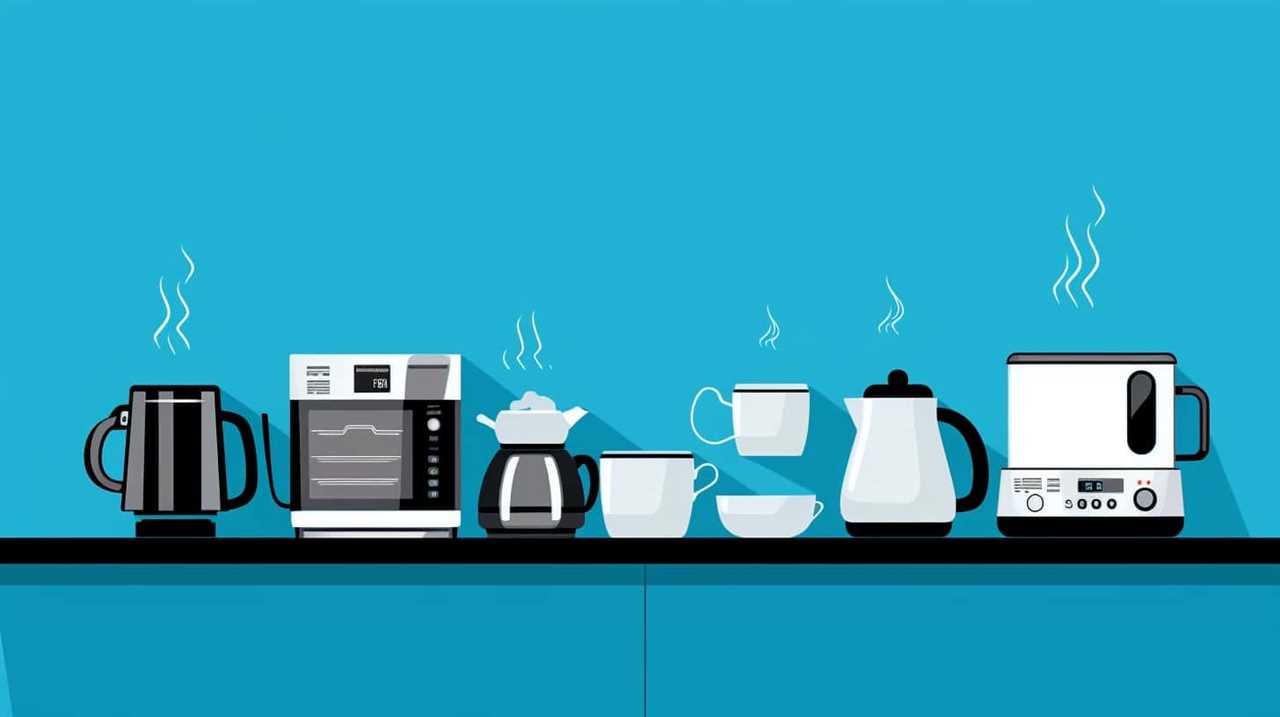
Additionally, it’s important to follow electric heater safety guidelines and consider energy efficient electric heaters to minimize energy consumption.
Transitioning to the next section about electric fans, let’s explore how these appliances can be powered by a 3500 watt generator.
Electric Fan
While using a 3500 watt generator, it’s important to consider how an electric fan can be powered. Electric fans are commonly used for cooling and air circulation purposes. To ensure the efficient operation of an electric fan and maximize its performance, proper maintenance is crucial. Here are some energy-saving tips for electric fans:
- Clean the fan blades regularly to remove dust and debris that can hinder airflow.
- Use the fan at appropriate speeds. Lower speeds consume less power.
- Position the fan strategically to optimize airflow and reduce the need for higher speed settings.
- Consider using a timer or programmable thermostat to automatically turn off the fan when not needed.
Toaster
We can continue the discussion on appliances that a 3500 watt generator can run by considering the toaster, as it is another commonly used household appliance. The power consumption of a toaster varies depending on its size and features. On average, a toaster consumes around 800 to 1500 watts when in use. This means that a 3500 watt generator can easily power a toaster without any issues. However, it is important to note that the generator’s capacity may limit the number of other appliances that can be run simultaneously. To illustrate this, we have provided a table below showcasing the power consumption of various appliances commonly found in households.

| Appliance | Power Consumption (Watts) |
|---|---|
| Toaster | 800-1500 |
| Electric Fan | 50-100 |
| Refrigerator | 100-800 |
| Microwave Oven | 600-1200 |
| Coffee Maker | 800-1200 |
It’s crucial to keep in mind these power limitations when using a 3500 watt generator to ensure efficient and safe operation of all connected appliances.
Blender
Continuing from the previous subtopic, another appliance that can be powered by a 3500 watt generator is a blender. When considering the wattage requirements for blenders, it’s important to note that they typically range from 300 to 1500 watts. With a 3500 watt generator, you have more than enough power to run most blenders available on the market.
However, it’s essential to consider the limitations of a 3500 watt generator for blenders. Here are a few key points to keep in mind:
- Blenders with higher wattage requirements may strain the generator, reducing its overall efficiency and potentially causing it to overload.
- If you plan on using multiple appliances simultaneously, such as a blender and other high-wattage devices, you may exceed the generator’s capacity.
- It’s always a good idea to check the wattage of your specific blender and calculate the total load to ensure it falls within the generator’s capabilities.
- Consider using energy-efficient blenders or adjusting the settings to lower power consumption, allowing you to maximize the generator’s output.
Hairdryer
When using a 3500 watt generator, it’s important to consider the wattage requirements and limitations of a hairdryer. Hairdryers typically consume a significant amount of power, especially when operating at their highest heat and speed settings.
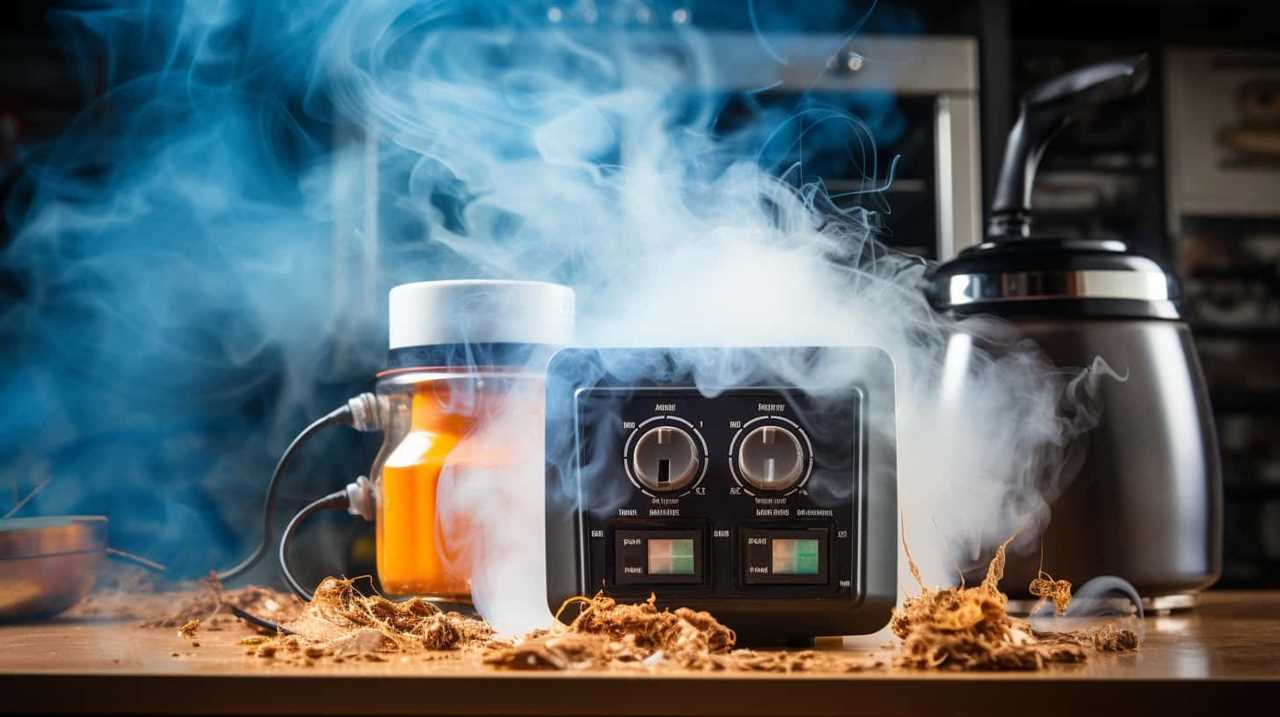
To ensure hairdryer safety and prevent overloading the generator, it’s crucial to check the wattage rating of the hairdryer. Most hairdryers range from 1200 to 1800 watts, although some high-end models can go up to 2000 watts.
When using a 3500 watt generator, it’s advisable to use energy-efficient hairdryers that consume less power without compromising performance. These hairdryers utilize advanced technologies to provide efficient drying with lower power consumption, making them suitable for use with a 3500 watt generator.
Iron
The iron’s wattage requirement should be considered when determining how many appliances a 3500 watt generator can run. The power consumption of an iron can vary depending on its wattage rating. To fully understand the impact of an iron on the generator’s capacity, it’s crucial to know the specific wattage of the iron being used.
Here are some key points to consider:
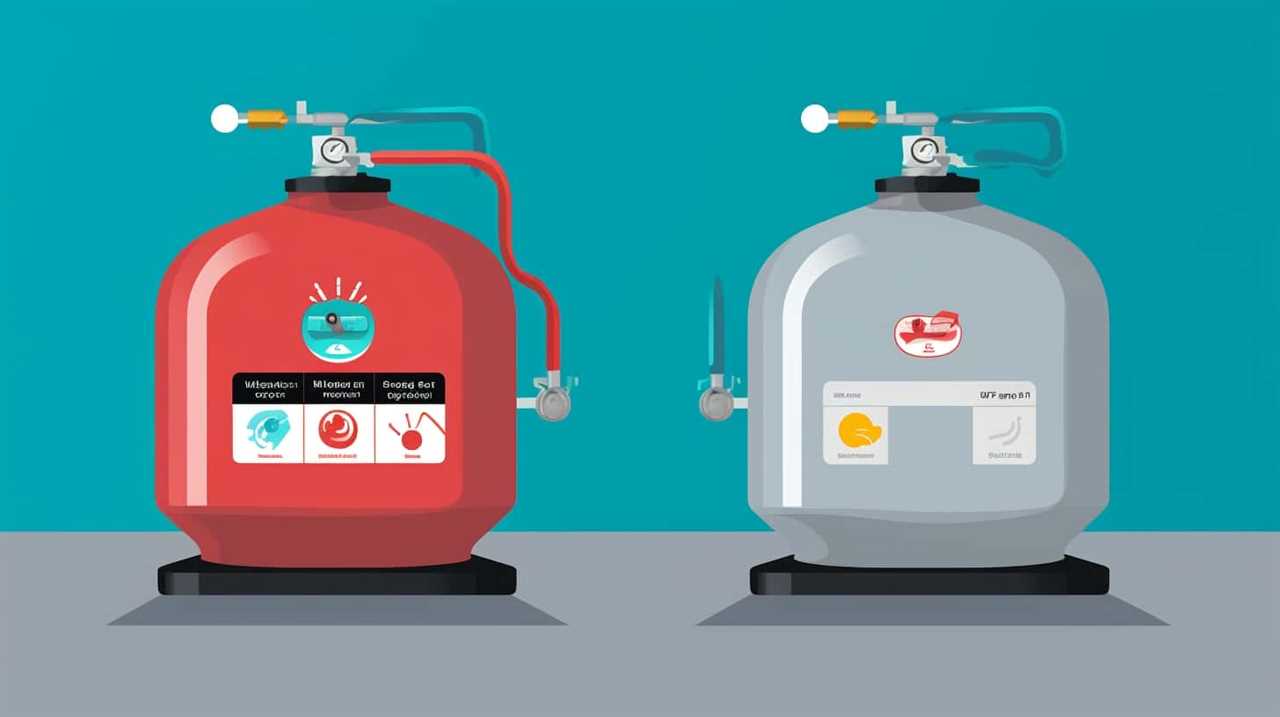
- Iron wattage: The wattage of an iron typically ranges from 1000 to 1800 watts.
- Power consumption: Irons have a high power consumption due to their heating elements.
- Impact on generator capacity: An iron with a wattage rating of 1000 watts would leave around 2500 watts available for other appliances on a 3500 watt generator.
- Consider other appliances: When calculating the load on the generator, it’s important to factor in the power consumption of other appliances that will be used simultaneously.
Understanding the wattage requirement of an iron is crucial in determining how many appliances can be run on a 3500 watt generator.
Frequently Asked Questions
Can a 3500-Watt Generator Power a Refrigerator and an Air Conditioner Simultaneously?
Yes, a 3500-watt generator can power a refrigerator and an air conditioner simultaneously. However, it is important to ensure that the total power consumption of both appliances does not exceed the generator’s capacity.
Is It Safe to Connect a Microwave and a Television to a 3500-Watt Generator at the Same Time?
Yes, a 3500-watt generator can handle a hairdryer and a blender simultaneously. However, it is not safe to connect a toaster and a vacuum cleaner to the generator at the same time.
How Many Laptops Can Be Powered by a 3500-Watt Generator?
We can power multiple laptops with a 3500-watt generator. However, it is important to consider the power requirements of each laptop. Additionally, a 3500-watt generator can potentially run a desktop computer and a gaming console simultaneously.
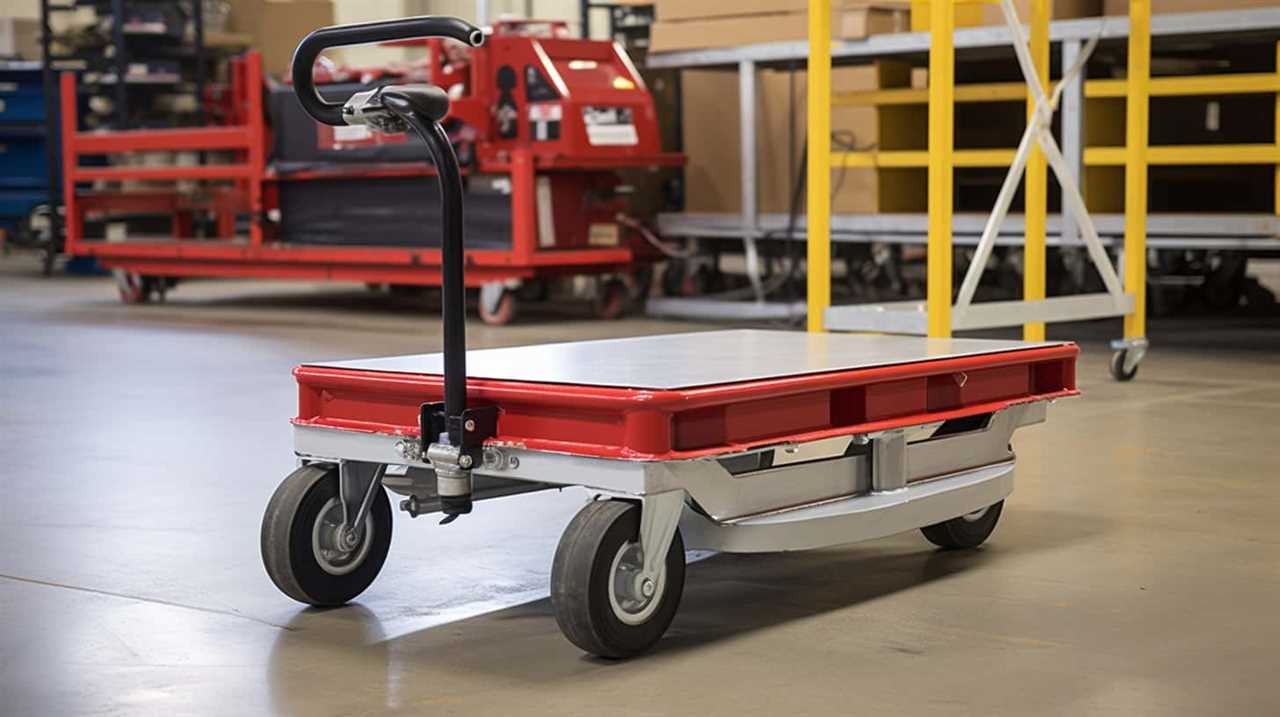
Can a Coffee Maker and an Electric Stove Be Operated Together on a 3500-Watt Generator?
Yes, it is possible to operate a coffee maker and an electric stove together on a 3500-watt generator. However, it is important to consider the safety of using both appliances simultaneously and the power consumption of the electric stove.
Can a 3500-Watt Generator Handle the Power Requirements of a Washing Machine and a Dishwasher Simultaneously?
A 3500-watt generator may not be able to handle the power requirements of a washing machine and dishwasher simultaneously. It is crucial to manage power usage wisely when running multiple appliances on this generator.
Conclusion
In conclusion, a 3500 watt generator can power multiple appliances simultaneously. With careful management and consideration of power requirements, it can comfortably handle essentials such as a refrigerator, air conditioner, microwave, television, laptop, toaster, blender, hairdryer, and iron.
However, it’s important to note that the specific power consumption of each appliance should be taken into account to ensure the generator operates within its capacity and avoids overload.

